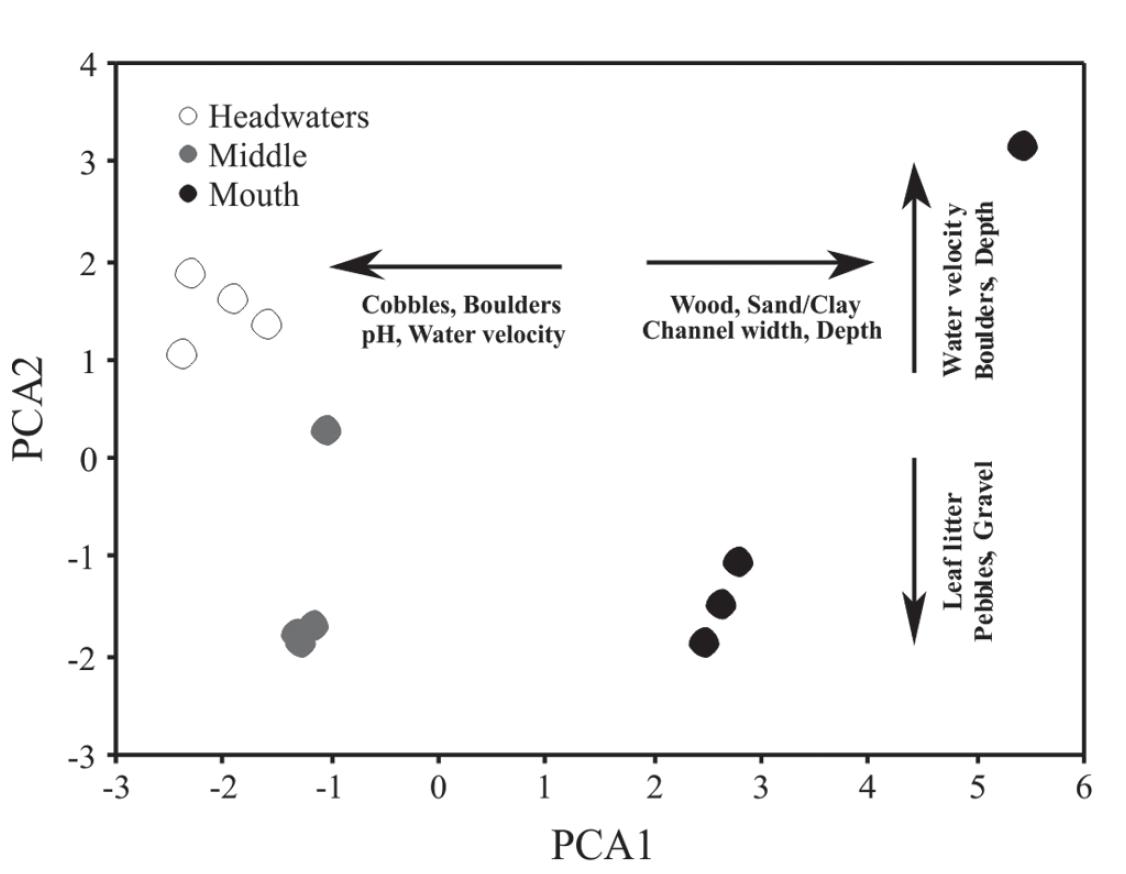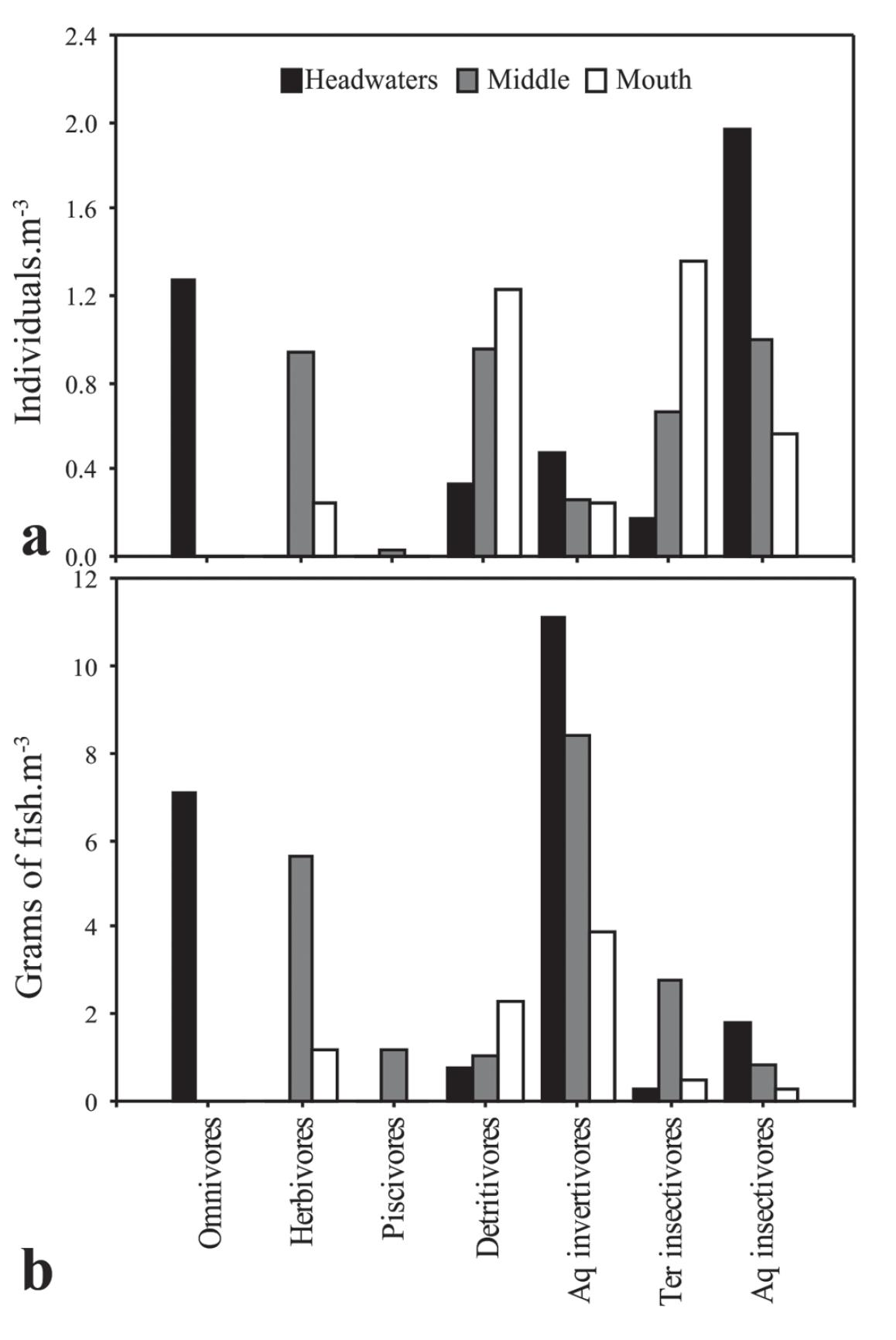This study described the use of food resources and the distribution of fish trophic guilds along the longitudinal gradient of a coastal Atlantic stream, southern Brazil. Allochthonous resources (terrestrial insects) predominated in the headwaters, whereas autochthonous food items (algae, fish) and detritus predominated in the mouth section. Detritivorous, aquaticinvertivorous, and terrestrial- and aquatic-insectivorous species occurred throughout the gradient, while omnivorous and piscivorous in the headwaters and middle stretches, respectively, and herbivorous in the middle and mouth. Detritivores and aquatic-insectivores were significantly more specialized than the other guilds, however, there was no evidence of a longitudinal increase in trophic specialization. Density and biomass of aquatic-invertivores and aquatic-insectivores decreased, whereas that of detritivores increased longitudinally. The distribution of trophic guilds was significantly associated with the stream section, where aquatic and terrestrial insectivorous were more frequent in rocky and flowed stretches from the headwater and detritivores in deeper environments with finer particles of substrate from the mouth. This suggests that fish assemblages in coastal streams with a steep longitudinal gradient may follow patterns in the use of food resources according with the food availability along the river, as predicted by the River Continuum Concept.
Atlantic Rainforest; Food availability; Freshwater fish; River Continuum Concept; Trophic structure








